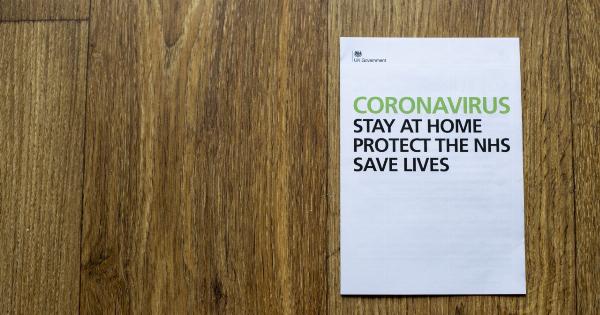Arthritis is a condition that can cause pain and inflammation in various parts of the body. One of the areas where arthritis can occur is the waist or lower back.
If you are experiencing waist pain, it is important to determine whether it is due to arthritis or another condition. Here are some ways to tell if waist pain indicates arthritis:.
Symptoms of Arthritis in the Waist
There are several symptoms that can indicate arthritis in the waist. These include:.
1. Stiffness and Reduced Range of Motion
If you have arthritis in your waist, you may feel stiff and have difficulty moving around. Your range of motion may be reduced, and you may struggle to do everyday tasks like bending over to tie your shoes.
This can be a sign that the joints in your lower back are affected by arthritis.
2. Pain that is Worse in the Morning or After Sitting for a Long Time
If your waist pain is worse in the morning or after sitting for a long time, it could be due to arthritis. This type of pain is common in many forms of arthritis and is caused by inflammation of the joints.
3. Pain in the Hips or Legs
Arthritis in the waist can also cause pain to radiate down into your hips or legs. This type of pain is known as referred pain and is a common symptom of arthritis.
4. Swelling or Redness around the Affected Area
If you have arthritis in your waist, you may notice swelling or redness around the affected area. This is a sign of inflammation and can be caused by the body’s immune response to the arthritis.
5. Difficulty Standing or Walking
Arthritis in the waist can make it difficult to stand or walk for long periods of time. You may feel a dull ache in your lower back or hips, and you may need to take breaks or sit down to relieve the pain.
Diagnosing Arthritis in the Waist
If you are experiencing waist pain that could be due to arthritis, your doctor can diagnose the condition using a variety of methods. These include:.
1. Physical Examination
Your doctor will examine your lower back and hips to look for signs of inflammation or tenderness. They may also ask you to perform certain movements or stretches to determine your range of motion.
2. Imaging Tests
To confirm a diagnosis of arthritis, your doctor may order imaging tests such as X-rays, CT scans, or MRIs. These tests can show if there is any damage to the bones or joints in your lower back.
3. Blood Tests
Blood tests can also help diagnose arthritis. Your doctor may order a blood test to check for markers of inflammation in your body, such as C-reactive protein (CRP) or erythrocyte sedimentation rate (ESR).
Treatments for Arthritis in the Waist
If you have been diagnosed with arthritis in your waist, there are several treatments that can help alleviate your symptoms and slow the progression of the disease. These include:.
1. Pain Relief Medications
Nonsteroidal anti-inflammatory drugs (NSAIDs) can help relieve pain and inflammation in the joints. Your doctor may also prescribe corticosteroids or other types of pain relief medication depending on the severity of your symptoms.
2. Physical Therapy
A physical therapist can help you strengthen the muscles in your lower back and hips, which can provide support for the affected joints. They may also recommend stretches and exercises to improve your range of motion and reduce pain.
3. Lifestyle Changes
You can also make lifestyle changes to help manage your symptoms. Losing weight, quitting smoking, and avoiding activities that put strain on your lower back can all help reduce pain and inflammation.
4. Surgery
If other treatments are not effective, your doctor may recommend surgery to remove damaged tissue or fuse the affected joints. This type of surgery is typically a last resort and is only recommended for severe cases of arthritis.
Conclusion
If you are experiencing waist pain, it is important to determine whether it is due to arthritis or another condition.
Some symptoms that can indicate arthritis in the waist include stiffness, pain that is worse in the morning, referred pain, swelling or redness, and difficulty standing or walking. Your doctor can diagnose arthritis using a physical examination, imaging tests, and blood tests. Treatments for arthritis in the waist include pain relief medications, physical therapy, lifestyle changes, and surgery.




























